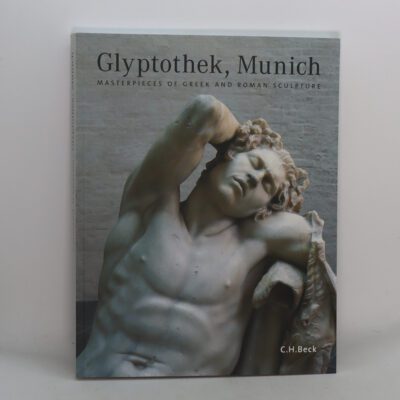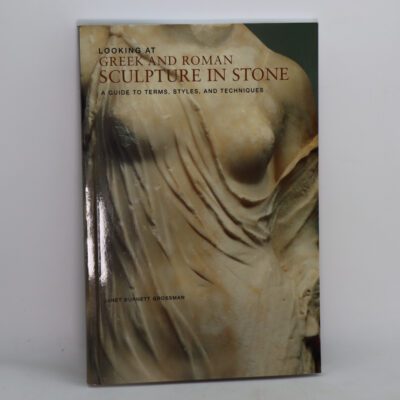Michaelangelo. The Complete Sculpture Painting Architecture.
By William E Wallace
ISBN: 9780883632079
Printed: 2009
Publisher: Universe Publishing. New York
| Dimensions | 29 × 37 × 4 cm |
|---|---|
| Language |
Language: English
Size (cminches): 29 x 37 x 4
Condition: As new (See explanation of ratings)
Item information
Description
In the original dustsheet. Tan cloth binding with gilt title on the front board and spine.
-
F.B.A. provides an in-depth photographic presentation of this item to stimulate your feeling and touch. More traditional book descriptions are immediately available.
With an engaging text by renowned Michelangelo scholar William E. Wallace, Michelangelo: The Complete Sculpture, Painting, Architecture brings together in one exquisite volume the powerful sculptures, the awe-inspiring paintings, and the classical architectural works of one of the greatest artists of all time. Including everything from his sculptures Pietàs and David to his beautiful paintings of the Sistine Chapel and the Doni Tondo, the book provides an opportunity to view Michelangelo’s work as never before, and to more fully understand the artist who, through his work, spoke of his life and times. The frescoes are specially printed on onion skin paper to recreate the actual appearance of light reflecting off of the plaster walls. The stunning black-and-white photography of the sculptures is printed in four colors to bring out the rich details of the marble.
Reviews:
-
This is a beautiful coffee table book, gorgeous colourful pictures, lots of information about Michaelangelo’s work, his life, lovely quality paper, I really couldn’t wait to receive this book. I was not disappointed, it’s a treat for the senses.
-
One of those publications to be displayed on a parlour table so that a high quality conversation begins. Besides the scholarly essays by an authority on Michelangelo the photography is of such superb quality that the beholders feel a close proximity to the works displayed, the finest treat of which are the centrefolds. Deserves more that five stars, stands alone as a work of art.
-
I can only say what a pleasant surprise this book was. It is a very large book, which only enhances the beauty of Michelangelo’s paintings and sculptures. The amount of work he got through in his life time was simply amazing. And he lived to be ninety. The author William E. Wallace is both informative and knowledgeable without being stuffy or boring. The reproductions of the paintings and sculptures are beautifully done. I can fully recommend this book, if only for the beautiful Sistine chapel. Outstanding.
Michelangelo di Lodovico Buonarroti Simoni (6 March 1475 – 18 February 1564), known as Michelangelo was an Italian sculptor, painter, architect, and poet of the High Renaissance. Born in the Republic of Florence, his work was inspired by models from classical antiquity and had a lasting influence on Western art. Michelangelo’s creative abilities and mastery in a range of artistic arenas define him as an archetypal Renaissance man, along with his rival and elder contemporary, Leonardo da Vinci. Given the sheer volume of surviving correspondence, sketches, and reminiscences, Michelangelo is one of the best-documented artists of the 16th century. He was lauded by contemporary biographers as the most accomplished artist of his era.
Michelangelo achieved fame early; two of his best-known works, the Pietà and David, were sculpted before the age of thirty. Although he did not consider himself a painter, Michelangelo created two of the most influential frescoes in the history of Western art: the scenes from Genesis on the ceiling of the Sistine Chapel in Rome, and The Last Judgment on its altar wall. His design of the Laurentian Library pioneered Mannerist architecture. At the age of 71, he succeeded Antonio da Sangallo the Younger as the architect of St. Peter’s Basilica. Michelangelo transformed the plan so that the western end was finished to his design, as was the dome, with some modification, after his death.
Michelangelo was the first Western artist whose biography was published while he was alive. In fact, three biographies were published during his lifetime. One of them, by Giorgio Vasari, proposed that Michelangelo’s work transcended that of any artist living or dead, and was “supreme in not one art alone but in all three.”
In his lifetime, Michelangelo was often called Il Divino (“the divine one”). His contemporaries often admired his terribilità—his ability to instill a sense of awe in viewers of his art. Attempts by subsequent artists to imitate the expressive physicality of Michelangelo’s style contributed to the rise of Mannerism, a short-lived movement in Western art between the High Renaissance and the Baroque.
Want to know more about this item?

Share this Page with a friend













